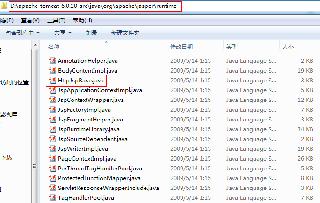Spring Security OAuth 自定義授權(quán)方式實(shí)現(xiàn)手機(jī)驗(yàn)證碼
Spring Security OAuth 默認(rèn)提供OAuth2.0 的四大基本授權(quán)方式(authorization_codeimplicitpasswordclient_credential),除此之外我們也能夠自定義授權(quán)方式。
先了解一下Spring Security OAuth提供的兩個(gè)默認(rèn) Endpoints,一個(gè)是AuthorizationEndpoint,這個(gè)是僅用于授權(quán)碼(authorization_code)和簡(jiǎn)化(implicit)模式的。另外一個(gè)是TokenEndpoint,用于OAuth2授權(quán)時(shí)下發(fā)Token,根據(jù)授予類(lèi)型(GrantType)的不同而執(zhí)行不同的驗(yàn)證方式。
OAuth2協(xié)議這里就不做過(guò)多介紹了,比較重要的一點(diǎn)是理解認(rèn)證中各個(gè)角色的作用,以及認(rèn)證的目的(獲取用戶(hù)信息或是具備使用API的權(quán)限)。例如在authorization_code模式下,用戶(hù)(User)在認(rèn)證服務(wù)的網(wǎng)站上進(jìn)行登錄,網(wǎng)站跳轉(zhuǎn)回第三方應(yīng)用(Client),第三方應(yīng)用通過(guò)Secret和Code換取Token后向資源服務(wù)請(qǐng)求用戶(hù)信息;而在client_credential模式下,第三方應(yīng)用通過(guò)Secret直接獲得Token后可以直接利用其訪(fǎng)問(wèn)資源API。所以我們應(yīng)該根據(jù)實(shí)際的情景選擇適合的認(rèn)證模式。
對(duì)于手機(jī)驗(yàn)證碼的認(rèn)證模式,我們首先提出短信驗(yàn)證的通常需求:
每發(fā)一次驗(yàn)證碼只能?chē)L試驗(yàn)證5次,防止暴力破解 限制驗(yàn)證碼發(fā)送頻率,單個(gè)用戶(hù)(這里簡(jiǎn)單使用手機(jī)號(hào)區(qū)分)1分鐘1條,24小時(shí)x條 限制驗(yàn)證碼有效期,15分鐘我們根據(jù)業(yè)務(wù)需求構(gòu)造出對(duì)應(yīng)的模型:
@Datapublic class SmsVerificationModel { /** * 手機(jī)號(hào) */ private String phoneNumber; /** * 驗(yàn)證碼 */ private String captcha; /** * 本次驗(yàn)證碼驗(yàn)證失敗次數(shù),防止暴力嘗試 */ private Integer failCount; /** * 該user當(dāng)日嘗試次數(shù),防止濫發(fā)短信 */ private Integer dailyCount; /** * 限制短信發(fā)送頻率和實(shí)現(xiàn)驗(yàn)證碼有效期 */ private Date lastSentTime; /** * 是否驗(yàn)證成功 */ private Boolean verified = false;}
我們預(yù)想的認(rèn)證流程:

接下來(lái)要對(duì)Spring Security OAuth進(jìn)行定制,這里直接仿照一個(gè)比較相似的password模式,首先需要編寫(xiě)一個(gè)新的TokenGranter,處理sms類(lèi)型下的TokenRequest,這個(gè)SmsTokenGranter會(huì)生成SmsAuthenticationToken,并將AuthenticationToken交由SmsAuthenticationProvider進(jìn)行驗(yàn)證,驗(yàn)證成功后生成通過(guò)驗(yàn)證的SmsAuthenticationToken,完成Token的頒發(fā)。
public class SmsTokenGranter extends AbstractTokenGranter { private static final String GRANT_TYPE = 'sms'; private final AuthenticationManager authenticationManager; public SmsTokenGranter(AuthenticationManager authenticationManager, AuthorizationServerTokenServices tokenServices, ClientDetailsService clientDetailsService, OAuth2RequestFactory requestFactory){ super(tokenServices, clientDetailsService, requestFactory, GRANT_TYPE); this.authenticationManager = authenticationManager; } @Override protected OAuth2Authentication getOAuth2Authentication(ClientDetails client, TokenRequest tokenRequest) { Map<String, String> parameters = new LinkedHashMap<>(tokenRequest.getRequestParameters()); String phone = parameters.get('phone'); String code = parameters.get('code'); Authentication userAuth = new SmsAuthenticationToken(phone, code); try { userAuth = authenticationManager.authenticate(userAuth); } catch (AccountStatusException ase) { throw new InvalidGrantException(ase.getMessage()); } catch (BadCredentialsException e) { throw new InvalidGrantException(e.getMessage()); } if (userAuth == null || !userAuth.isAuthenticated()) { throw new InvalidGrantException('Could not authenticate user: ' + username); } OAuth2Request storedOAuth2Request = getRequestFactory().createOAuth2Request(client, tokenRequest); return new OAuth2Authentication(storedOAuth2Request, userAuth); }}
對(duì)應(yīng)的SmsAuthenticationToken,其中一個(gè)構(gòu)造方法是認(rèn)證后的。
public class SmsAuthenticationToken extends AbstractAuthenticationToken { private final Object principal; private Object credentials; public SmsAuthenticationToken(Object principal, Object credentials) { super(null); this.credentials = credentials; this.principal = principal; } public SmsAuthenticationToken(Object principal, Object credentials,Collection<? extends GrantedAuthority> authorities) { super(authorities); this.principal = principal; this.credentials = credentials; // 表示已經(jīng)認(rèn)證 super.setAuthenticated(true); } ...}
SmsAuthenticationProvider是仿照AbstractUserDetailsAuthenticationProvider編寫(xiě)的,這里僅僅列出核心部分。
public class SmsAuthenticationProvider implements AuthenticationProvider { @Override public Authentication authenticate(Authentication authentication) throws AuthenticationException { String username = authentication.getName(); UserDetails user = retrieveUser(username); preAuthenticationChecks.check(user); String phoneNumber = authentication.getPrincipal().toString(); String code = authentication.getCredentials().toString(); // 嘗試從Redis中取出Model SmsVerificationModel verificationModel =Optional.ofNullable( redisService.get(SMS_REDIS_PREFIX + phoneNumber, SmsVerificationModel.class)).orElseThrow(() -> new BusinessException(OAuthError.SMS_VERIFY_BEFORE_SEND)); // 判斷短信驗(yàn)證次數(shù) Optional.of(verificationModel).filter(x -> x.getFailCount() < SMS_VERIFY_FAIL_MAX_TIMES).orElseThrow(() -> new BusinessException(OAuthError.SMS_VERIFY_COUNT_EXCEED)); Optional.of(verificationModel).map(SmsVerificationModel::getLastSentTime)// 驗(yàn)證碼發(fā)送15分鐘內(nèi)有效,等價(jià)于發(fā)送時(shí)間加上15分鐘晚于當(dāng)下.filter(x -> DateUtils.addMinutes(x,15).after(new Date())).orElseThrow(() -> new BusinessException(OAuthError.SMS_CODE_EXPIRED)); verificationModel.setVerified(Objects.equals(code, verificationModel.getCaptcha())); verificationModel.setFailCount(verificationModel.getFailCount() + 1); redisService.set(SMS_REDIS_PREFIX + phoneNumber, verificationModel, 1, TimeUnit.DAYS); if(!verificationModel.getVerified()){ throw new BusinessException(OAuthError.SmsCodeWrong); } postAuthenticationChecks.check(user); return createSuccessAuthentication(user, authentication, user); } ...
接下來(lái)要通過(guò)配置啟用我們定制的類(lèi),首先配置AuthorizationServerEndpointsConfigurer,添加上我們的TokenGranter,然后是AuthenticationManagerBuilder,添加我們的AuthenticationProvider。
@Configuration@EnableAuthorizationServerpublic class OAuth2Config extends AuthorizationServerConfigurerAdapter { @Override public void configure(AuthorizationServerSecurityConfigurer security) throws Exception { security.passwordEncoder(passwordEncoder).checkTokenAccess('isAuthenticated()').tokenKeyAccess('permitAll()')// 允許使用Query字段驗(yàn)證客戶(hù)端,即client_id/client_secret 能夠放在查詢(xún)參數(shù)中.allowFormAuthenticationForClients(); } @Override public void configure(AuthorizationServerEndpointsConfigurer endpoints) throws Exception { endpoints.authenticationManager(authenticationManager).userDetailsService(userDetailsService).tokenStore(tokenStore); List<TokenGranter> tokenGranters = new ArrayList<>(); tokenGranters.add(new AuthorizationCodeTokenGranter(endpoints.getTokenServices(), endpoints.getAuthorizationCodeServices(), clientDetailsService,endpoints.getOAuth2RequestFactory())); ... tokenGranters.add(new SmsTokenGranter(authenticationManager, endpoints.getTokenServices(),clientDetailsService, endpoints.getOAuth2RequestFactory())); endpoints.tokenGranter(new CompositeTokenGranter(tokenGranters)); }}
@EnableWebSecurity@Configurationpublic class SecurityConfig extends WebSecurityConfigurerAdapter { ... @Override protected void configure(AuthenticationManagerBuilder auth) { auth.authenticationProvider(daoAuthenticationProvider()); } @Bean public AuthenticationProvider smsAuthenticationProvider(){ SmsAuthenticationProvider smsAuthenticationProvider = new SmsAuthenticationProvider(); smsAuthenticationProvider.setUserDetailsService(userDetailsService); smsAuthenticationProvider.setSmsAuthService(smsAuthService); return smsAuthenticationProvider; }}
那么短信驗(yàn)證碼授權(quán)的部分就到這里了,最后還有一個(gè)發(fā)送短信的接口,這里就不展示了。
最后測(cè)試一下,curl --location --request POST ’http://localhost:8080/oauth/token?grant_type=sms&client_id=XXX&phone=手機(jī)號(hào)&code=驗(yàn)證碼’ ,成功。
{ 'access_token': '39bafa9a-7e5b-4ba4-9eda-e307ac98aad1', 'token_type': 'bearer', 'expires_in': 3599, 'scope': 'ALL'}
到此這篇關(guān)于Spring Security OAuth 自定義授權(quán)方式實(shí)現(xiàn)手機(jī)驗(yàn)證碼的文章就介紹到這了,更多相關(guān)Spring Security OAuth手機(jī)驗(yàn)證碼內(nèi)容請(qǐng)搜索好吧啦網(wǎng)以前的文章或繼續(xù)瀏覽下面的相關(guān)文章希望大家以后多多支持好吧啦網(wǎng)!
相關(guān)文章:
1. JSP動(dòng)態(tài)網(wǎng)頁(yè)開(kāi)發(fā)原理詳解2. XHTML 1.0:標(biāo)記新的開(kāi)端3. vue實(shí)現(xiàn)動(dòng)態(tài)給id賦值,點(diǎn)擊事件獲取當(dāng)前點(diǎn)擊的元素的id操作4. python如何使用騰訊云發(fā)送短信5. .NET6使用ImageSharp實(shí)現(xiàn)給圖片添加水印6. python基于win32實(shí)現(xiàn)窗口截圖7. WML學(xué)習(xí)之六 事件8. 詳解Java關(guān)于時(shí)間格式化的方法9. Vue中使用Echarts儀表盤(pán)展示實(shí)時(shí)數(shù)據(jù)的實(shí)現(xiàn)10. PHP擴(kuò)展之URL編碼、解碼及解析——URLs

 網(wǎng)公網(wǎng)安備
網(wǎng)公網(wǎng)安備